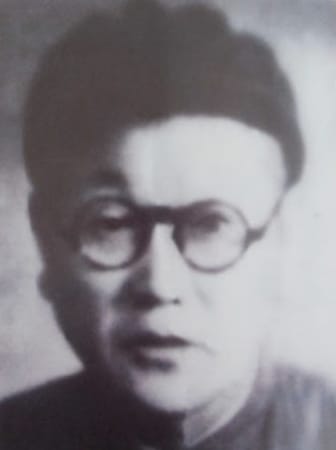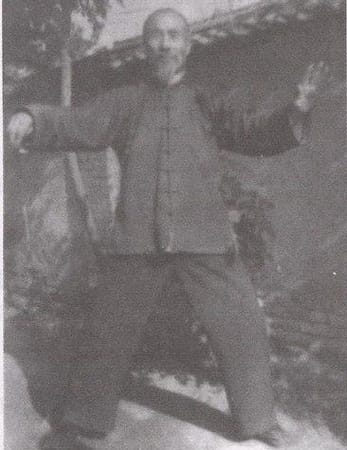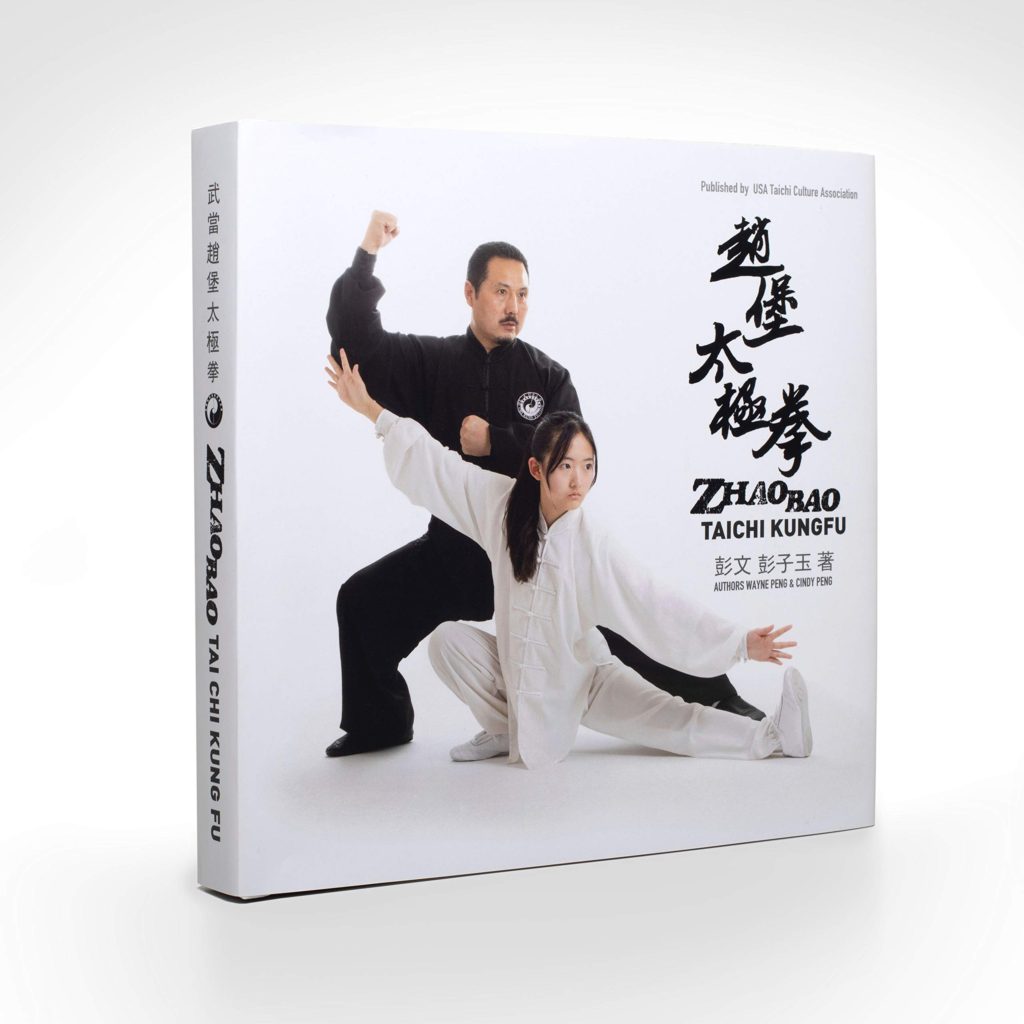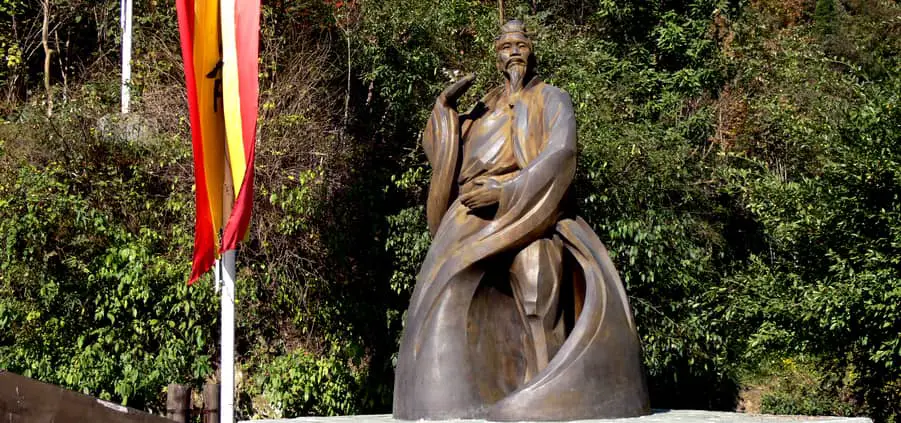Each style of tai chi offers us a unique perspective on how we can improve our own practice and thereby get a lot more enjoyment out of life. Think of it as an out-of-the-box experiment where masters learned tai chi and then said “this is the most important part!” spending their life advancing what we know about internal energy, flow, flexibility, or even martial skills. Zhao Bao tai chi is a lesser known style that put a lot of effort into developing their stances, grappling, push hands, and internal strength.
Zhao bao tai chi chuan is an internal martial that is a system of open hand forms and weapons forms, with an emphasis on joint locks and push hands. It shares much of its early history with Chen style tai chi but is distinct in its speed, flow. and focus on stance height. Unlike the main styles of tai chi, it is named after its village of origin rather than a family.
Often times it is difficult to use words to explain the difference between the various styles of tai chi. So before we jump into Zhaobao history, forms and resources, I want to start with this video because it contains the essence of Zhaobao and everything I am going to share after. Zhao bao has a lot to teach us about how we can improve our own tai chi and age gracefully.
Zhao Bao Tai Chi History
Zhao Bao tai chi has its origins right at the beginning of the development of the internal martial arts. Zhang San-feng was a legendary Daoist monk believed to connect the philosophy of Lao Tzu to movement in order to create tai chi chuan. His knowledge was passed down to his disciple Wang Zong-yue who later instructed Jiang Fa. Jiang Fa was a martial artist from Wen County, Hebei Province where Chen Village is located. This is believed to be the way the internal martial arts arrived to Chen Village and set in motion of the development of tai chi chuan. What is not typically known is that Jiang Fa was from a village called Zhao Bao which is just north of Chen Village on the north side of the Yellow River.
Why isn’t Zhao Bao Tai Chi As Well Known?
If you are like me, when you heard this origin story you were probably wondering why Chen is considered the origin of tai chi and probably wondering why Zhao Bao didn’t rise in with the same popularity. For the first nine generations of practitioners, no one outside of Zhao Bao Village was allowed to be taught. While this didn’t lead to fame or notoriety, this is a really neat aspect of this style and really fortunate for us. The original teachings of tai chi were preserved in one place for several hundred years without any outside influence. In the same way that scientists study different species to identify what has evolved over the years, Zhao Bao gives us something gives us something original to compare all developments in tai chi to.
Zhao Bao’s reluctance to share and interact with the outside world ended for three reasons. The War of Resistance Against Japan (Sino-Japanese War) broke out causing many Chinese to move for the first time in generations due to fleeing occupied areas or seeking work. So practitioners of Zhao Bao tai chi moved north and south. Secondly, two brothers of the 10th generation, Zheng Wu-qing and Zheng Bo-ying, actively decided to teach the art. They moved to the northwest, primarily due to the war and started teaching. Zhao Bao tai chi remains a popular practice to this day in their adopted city of Xian. Lastly, and this is true of all tai chi styles, the leaders began teaching outsiders to share the art with the world and out of fear that the art form might be lost.


The “Famous Zheng Brothers” or “Two (Tai Chi) Heroes of the Northwest” are responsible for further developing the forms that practiced today. Zheng Wuqing (1895-1984) taught the small frame which has 75 movements and is both reduced in the number of postures and the size of the movements like the smaller circles that the arms and hands make. Zheng Boying developed the large frame which he taught to the military when he was appointed to teach officers of the National Revolutionary Army. It traditionally has 108 movements and has bigger movements and lower stances.
Zhao Bao Tai Chi Chuan Movements and Style
The tie between Daoist and Confucius thought from books like the I Ching (The Book of Change) and Zhongyong (The Doctrine of the Mean) are really evident in the movements of Zhao Bao. You often hear says such as “Be as light as a cloud and as fluid as water” attributed to tai chi but in this style it is actually visible. A Zhao Bao form is very different looking than the other tai chi styles, It is swift and graceful, and continually flowing. It does not move as slowly as the other styles and even long forms are completed in less than 10 minutes. Zhao Bao maintains an erect posture with the footwork, joints, and limbs all moving in circular patterns.
Yes, it’s flowing and beautiful but is also a fighting art intended for close-quarters combat. It teaches joint locks and throws for nearly every posture with a continual goal of throwing an opponent to the ground. With its deep roots in history and connection to the military, Zhao Bao tai chi retains a close relationship with its martial arts roots. Through the push hands videos and form demonstrations that follow, you will see that Zhao Bao tai chi and Chen share many similarities but also many distinct differences.
Zhao Bao Push Hands
Zhao Bao has a huge tradition of push hands (tui shou) and joint locks (qinna) and tying the movements of the form DIRECTLY to applications. This relationship to martial application is possibly the closest of all the tai chi styles. As an example, here is a great one minute clip of a Zhao Bao push hands master showing how portions of the form can be applied to martial applications.
Zhao Bao Martial Applications Video
If you like to see takedowns, one happens about every 30 seconds in this old Zhaobao Taijiquan martial applications video! The pattern in similar to Chen style push hands.
Zhao Bao Tai Chi Forms
The Zhao Bao tai chi forms passed down from Zheng Wu-qing and Zheng Boying are largely long and short sets consisting of 108 and 75 movements. Like most tai chi styles, modern masters have added even shorter sets to encourage more participation from people of any age and with different health circumstances. Zhao Bao also has weapons forms that are practiced. I have examples of each of these below but before we get into that I want to tough on a very unique characteristic of Zhao Bao tai chi form teaching. Regardless of the form length, there is also an emphasis on stance height with new practitioners beginning at a medium height, advancing to a low stance, and moving on to a high stance once their internal development is a a high enough level to be able to master the movements with higher, less visibly obvious movements.
Zhao Bao Medium Stance Height
Zhao Bao Low Stance Height
Zhao Bao First Form High Stance
How Moves in the Form and What About He Style Tai Chi?
Zhao Bao tai chi forms are currently taught in 24, 43. 56. 75, and 108 movements. Additionally, one thing that we haven’t touched on much in this article is that starting at the 7th generation, practitioners from the He family started making great contributions to this art form. Therefore sometimes that form is called Zhaobao He-Style. However, any discussion about “Zhaobao Vs He Taiji” is largely an artificial distinction because all Zhao Bao and He practitioners share the same lineage.
Much of the available resources out there have been produced by Master Wayne Peng who currently teaches and lives in California, U.S. He has worked hard to record and transmit the teachings he received from his teacher
Zhaobao Taichi 24 Form
He style 72 form Tai Chi
Zhaobao Taichi 75 Form
Zhao Bao Tai Chi Weapons
Why Zhao Bao emphasizes the hand-to-hand fighting aspects of the art. A few weapons forms are also practiced. Here are two examples.
Zhao Bao Tai Chi Sword
Zhao Bao Tai Chi Staff

Zhao Bao Tai Chi Books and Video Resources
As you can imagine with an art that keep it’s doors shut for several generations that the resources available are few and far between. Here are two resources that seem to be in stock more than they are not! And if you are looking to practice, Wayne Peng has the most resources.
An Overview the Main Tai Chi Styles
This is part of a series of articles that we wrote on all the most popular styles of tai chi. Keep reading in that direction or find out how to improve your tai chi form.


